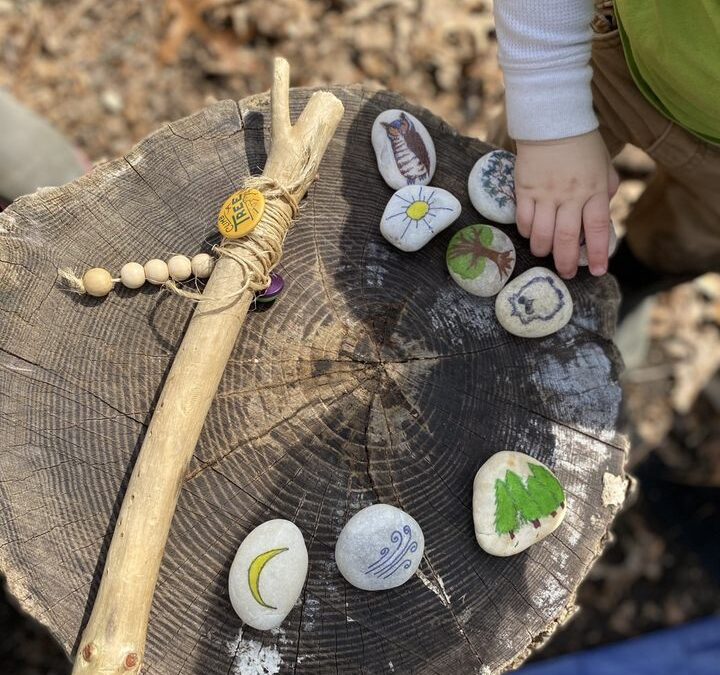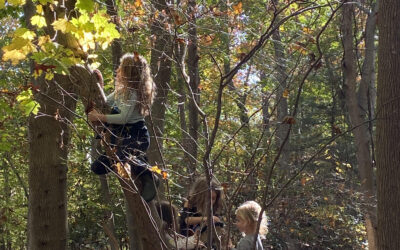Storytelling + Storyacting: A Powerful Tool For Children

“Storytelling is the most powerful way to put ideas into the world today.”- Robert McAfee Brown
So some may wonder, why is storytelling so crucial to children’s development and how can we encourage the practice with them? “Storytelling connects your child to their imagination and new ideas while also engaging them through the use of words and actions.” (Gratton, “How Telling Stories Helps Kids Learn” 2021)
Storytelling and story acting with children is a powerful tool for fostering creativity, imagination, empathy, and language development in young minds. Not only does it allow children to explore different narratives, characters, and emotions, but it also helps them develop a better understanding of their own lives and the world around them.
Telling stories is how we translate language and history, how we teach, how we learn, how we make sense of the world, and how we continue to tell them for generations. It’s how we keep people, memories, and experiences alive. Indigenous peoples have used stories as a way of passing cultures down and teaching others their wisdom dating back centuries. Stories are what help us understand not only others, but also the way we understand ourselves. It’s nearly impossible to teach a young child using facts and logic, but when we communicate to them in the form of storytelling, that is how we can help translate these ideas into their own language.
Storytelling and Storyacting (ST/SA), developed by Vivian Gussin Paley, is a widely used approach for dictating and acting out stories in early childhood classrooms (Cooper, 2009)1 . “Storytelling and Storyacting provides a bridge between the contextualized speech of young children and the decontextualized language of books and writing.” (Mardell et al., “Vivian Paley’s Storytelling.”)
According to Paley, storytelling provides children with creativity, self-regulation, self-esteem, motivation, and a way to connect and develop a sense of community building. These components are key to helping with social emotional development. It provides a space for inclusive learning where all forms of participation are encouraged and celebrated. Storytelling/storyacting doesn’t always have to be verbal; it can be played out with gestures and movements, actions and drawings. What we know is that stories stick. Peg Neuhauser, an organizational psychologist, found that a well-told story that promotes learning is likely to be remembered more accurately than learning facts or basic information. In addition, research done by psychologist Jerome Bruner suggests that when facts are presented within a story, they are twenty times more likely to be remembered.
 Here at Aishling, we often share and even co-create our own inclusive stories. One such story is that of “The Little Owl Who Couldn’t Fly”, and we will ask the learners if anyone would like to act out any of the characters, giving them a sense of purpose and involvement with telling the story in their own way. In “The Little Owl Who Couldn’t Fly”, Elsu the Great Horned owlet struggles with learning how to fly, he comes across the animals in the forest such as slithering snakes, a flying squirrel, and of course, Ash, our forest fairy. They assure Elsu that he is born to fly; in fact, the origin of his Native American name means “Flying Falcon”. The animals lead Elsu to our special Grandmother Tree telling him that she is the one who will insight her wisdom, and give him the confidence he needs. Grandmother Tree does this without words and in to provide inclusivity for any learners who may not always communicate with words. Ash flutters into Elsu’s dreams later that evening, when he wakes up he suddenly realizes that everyone was right and that he was born to fly. Climbing his way up Grandmother Tree, he leaps off of her highest branch, flaps his little owlet wings and he takes flight, knowing that he could always come back to her and his new friends in the forest for support and encouragement.
Here at Aishling, we often share and even co-create our own inclusive stories. One such story is that of “The Little Owl Who Couldn’t Fly”, and we will ask the learners if anyone would like to act out any of the characters, giving them a sense of purpose and involvement with telling the story in their own way. In “The Little Owl Who Couldn’t Fly”, Elsu the Great Horned owlet struggles with learning how to fly, he comes across the animals in the forest such as slithering snakes, a flying squirrel, and of course, Ash, our forest fairy. They assure Elsu that he is born to fly; in fact, the origin of his Native American name means “Flying Falcon”. The animals lead Elsu to our special Grandmother Tree telling him that she is the one who will insight her wisdom, and give him the confidence he needs. Grandmother Tree does this without words and in to provide inclusivity for any learners who may not always communicate with words. Ash flutters into Elsu’s dreams later that evening, when he wakes up he suddenly realizes that everyone was right and that he was born to fly. Climbing his way up Grandmother Tree, he leaps off of her highest branch, flaps his little owlet wings and he takes flight, knowing that he could always come back to her and his new friends in the forest for support and encouragement.
What we learn from our story, is that sometimes all you need is the confidence to use the gifts you were given, with just a little support from your forest friends, you too can also fly, just like Elsu did. You can read the complete story here and we encourage you to re-tell this one with your littles and ask them if they’d like to act it out as you tell it.
When we practice storytelling and acting with our learners, we ask them about their stories, their dreams, their wishes and we help them to write them down in their nature journals. This provides rich documentation that we can refer to and allows them to share their voice, increase literacy and creativity. We then given them the opportunity to storyact their stories in front of their peers, providing them the opportunity to write, direct, cast and act out their creative pursuits in meaningful ways. All of this allows their imaginations and creativity to run wild. It encourages language learning, as well as their social emotional development skills by working together to collaborate and share their ideas.
And when out in nature, the learners’ imaginations flourish even more. The animals, trees, animate, and inanimate objects that make up the land become the characters. The place in which they are becomes the setting. Oftentimes, the learner will be the protagonist in their own story, as children tend to connect with stories that involve characters they know, maybe from a movie or show they like, themselves, and even family members. This allows the learners to deeply work through and process what’s happening in their lives in a playful and meaningful way.

Storytelling and Storyacting at Home:
- Spend time in nature and ask “I wonder” questions. For example, next time you come across a hollowed out tree, maybe you can ask who might live there? I’m sure you will be amazed at what your child can come up with. Try storyacting out these adventures together.
- Encourage storytelling at dinner, before bed or on longer care rides. Be sure to show great interest in these stories and be sure to listen well. Some great storytelling prompts can be….
- Once there was …
- And their best friend was…
- And everyday they…
- Until one day…
- And now everyday…
- Ask family members, especially elders to share stories with you and your children, as stories are a wonderful way to share a family’s culture with the family.
What is Friluftsliv and Can It Make Us Healthier, Happier and More Creative?
"Friluftsliv isn't something you can touch. It's something you feel in your soul."– August Casson Friluftsliv (pronounced FREE-loofts-liv) or “open-air life” is a big part of Aishling Forest School’s outdoor pedagogy and is a centuries-old Nordic tradition of...
How Forest School Nurtures Brain Development
“When we help a child to feel secure, feel appreciated, feel that “somebody is deeply, truly interested in me,” by the way we just look, the way we just listen, we influence that child’s whole personality, the way that child sees life.” – Magda Gerber It is...
How to Nurture Your Child’s Intuition: Their Inner Compass
“The only real valuable thing is intuition”- Albert Einstein Our intuition is our inner light and is an undeniably important aspect of humanity that we must pass down to our youth as they grow into adulthood. Both a skill and an art form, all humans possess intuition...




